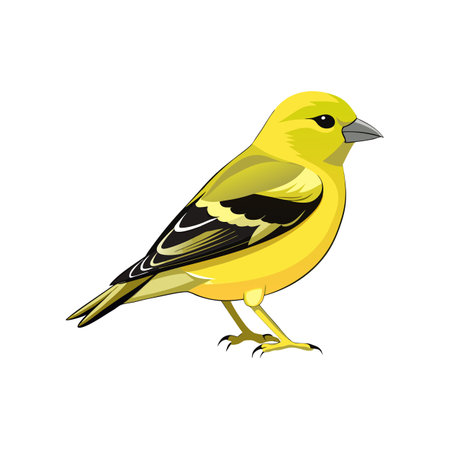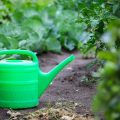Introduction to Natural Predators in UK Gardens
Creating a thriving British garden is about more than just beautiful plants and well-tended borders. One of the most effective and sustainable ways to keep your garden healthy is by encouraging natural predators to help control pests. These beneficial creatures, from ladybirds to hedgehogs, play a vital role in maintaining balance in local ecosystems. By understanding the importance of natural predators, gardeners across the UK can reduce their reliance on chemical pesticides, support biodiversity, and enjoy a flourishing outdoor space year-round. Embracing these allies not only protects your prized flowers and vegetables but also contributes to a greener, more resilient environment for everyone.
Common Beneficial Wildlife in the UK
UK gardens are home to a variety of natural predators that help control common pests. These creatures not only maintain ecological balance but also reduce the need for chemical interventions. Below is an overview of some of the most valuable predator species you might find in your British garden.
Key Predators and Their Roles
| Species | Description | Main Prey | Where Youll Find Them |
|---|---|---|---|
| Hedgehogs | Small, nocturnal mammals known for their spiny coats; active at dusk and night. | Slugs, snails, beetles, caterpillars | Under hedges, log piles, or dense shrubbery |
| Ladybirds (Ladybirds) | Tiny beetles with distinctive red and black spots; both adults and larvae are voracious eaters. | Aphids, scale insects | On roses, shrubs, and vegetable plants |
| Frogs | Amphibians that thrive in damp environments; excellent at pest control during spring and summer. | Slugs, insects, spiders | Ponds, damp flower beds, under stones |
| Garden Birds (e.g. Robins, Blue Tits) | Various small birds commonly seen flitting around gardens; known for their keen eyesight. | Caterpillars, aphids, grubs, beetles | Trees, shrubs, bird feeders |
| Ground Beetles | Nocturnal insects with shiny black or metallic bodies; swift hunters on the soil surface. | Slugs, snails, larvae, other insects | Beneath stones, logs, leaf litter |
The Importance of Diversity in Garden Wildlife
Encouraging a range of these beneficial species ensures more effective pest management throughout the seasons. Each predator targets specific garden pests and contributes to a healthy ecosystem. By making your garden hospitable to these wildlife allies, you create a natural defence system against unwanted visitors.

3. How Natural Predators Help with Pest Control
Encouraging natural predators in your UK garden is a smart and sustainable way to manage pests without relying on chemicals. Various wildlife species play important roles in keeping common garden pests under control, each contributing to the balance of your garden’s ecosystem.
Ladies and Gentlemen: Ladybirds
Ladybirds (ladybugs) are perhaps the most well-known beneficial insects in British gardens. Both adults and their larvae feed on aphids, whiteflies, and scale insects. A single ladybird can eat dozens of aphids in a day, making them excellent allies for keeping these sap-sucking pests at bay.
Frogs and Toads: The Night Shift
Frogs and toads are often found near ponds or damp areas. These amphibians are particularly helpful in controlling slugs, snails, beetles, and other soft-bodied pests that emerge at dusk or overnight. By creating a welcoming habitat with water features or log piles, you invite these effective pest controllers into your garden.
Hedgehogs: The Garden’s Little Helpers
Hedgehogs are iconic British wildlife, well-loved for their charm and appetite for garden pests. They feed on slugs, caterpillars, beetles, and even earwigs. Providing safe passageways between gardens and leaving some wild areas encourages hedgehogs to patrol your patch for unwanted insects.
Birds: Nature’s Pest Patrol
Many native birds such as robins, blackbirds, and blue tits feast on caterpillars, grubs, aphids, and other insects. Installing bird feeders and nesting boxes encourages these feathered friends to visit regularly, helping reduce pest populations throughout the growing season.
Hoverflies: Unassuming Allies
Hoverfly larvae may be small but are voracious predators of aphids and thrips. Adult hoverflies also help pollinate flowers as they feed on nectar. Growing a mix of flowering plants attracts hoverflies to your garden, offering both pest control and pollination benefits.
Ground Beetles: Silent Guardians
Ground beetles are nocturnal hunters that consume a range of pests including slugs, caterpillar eggs, vine weevils, and more. Leaving some leaf litter or stones provides shelter for these useful beetles so they can thrive and protect your plants naturally.
Together, these natural predators form an effective first line of defence against common UK garden pests. By supporting diverse wildlife in your outdoor space, you promote a healthy ecosystem where pest problems are kept in check—naturally and beautifully.
4. Creating a Wildlife-Friendly Garden
Encouraging natural predators in your UK garden starts with creating an inviting environment for beneficial wildlife. By making thoughtful choices in planting and habitat creation, you can support a healthy ecosystem that helps manage pests naturally.
Practical Tips for Attracting Beneficial Wildlife
- Plant Native Species: Native plants provide familiar food sources and shelter for local wildlife, including birds, hedgehogs, and insects that prey on garden pests.
- Create Diverse Habitats: Include a mix of shrubs, trees, wildflowers, and grasses to offer various shelter and breeding spots.
- Add Water Sources: A small pond or birdbath supports amphibians and attracts insect-eating birds.
- Avoid Chemicals: Limit the use of pesticides and herbicides to protect beneficial insects like ladybirds and hoverflies.
- Leave Wild Corners: Allow some areas of your garden to grow wild or pile up logs and leaves as homes for frogs, hedgehogs, and beetles.
Examples of Wildlife-Friendly Features
| Feature | Benefits | Suggested UK Plants/Materials |
|---|---|---|
| Hedge rows | Shelter for birds & small mammals | Hawthorn, blackthorn, dog rose |
| Ponds | Habitat for frogs & newts (slug eaters) | N/A – add water plants like water mint or yellow flag iris |
| Wildflower patches | Nectar for pollinators & hoverflies | Oxeye daisy, red clover, cornflower |
| Log piles/leaf litter | Shelter for beetles & hedgehogs | Untreated local wood, autumn leaves |
| Nesting boxes | Safe sites for birds & bats (moth catchers) | Pine or cedar wood boxes placed in quiet spots |
Maintaining Your Wildlife-Friendly Garden
- Mow less often to let wildflowers bloom.
- Avoid clearing all debris; leave some for overwintering insects.
- Check ponds in winter to ensure they don’t freeze over completely.
A Balanced Approach Pays Off
A well-designed wildlife-friendly garden creates a balance where beneficial predators thrive and help control pests. By supporting native species and providing diverse habitats, you’ll enjoy a healthier garden with fewer pest problems—naturally.
5. Avoiding Harmful Practices
To truly support natural predators in your UK garden, it’s important to be mindful of everyday gardening habits that might unintentionally harm beneficial wildlife. First and foremost, minimise the use of chemical pesticides and herbicides. These products not only target pests but can also impact friendly insects like ladybirds, hoverflies, and lacewings. Instead, consider organic alternatives or manual pest removal methods.
Avoid using slug pellets containing metaldehyde, which are toxic to hedgehogs and birds. Opt for wildlife-friendly options such as beer traps or copper tape. When tidying up, leave some leaf litter or log piles undisturbed—these spots provide essential shelter for ground beetles and frogs. Similarly, mow lawns less frequently and allow wild corners to flourish, creating refuges for a wide range of helpful creatures.
If you must use any treatments, apply them carefully and at times when pollinators are less active, such as late evening. Always read product labels and choose those approved for organic gardening where possible. By adopting these gentle gardening approaches, you’ll foster a thriving ecosystem where natural predators can keep pests in check without risking their wellbeing.
Benefits Beyond Pest Control
Encouraging natural predators in UK gardens does more than just manage pests. By inviting wildlife such as birds, hedgehogs, frogs, and beneficial insects, gardeners help support the local ecosystem’s health and balance. These creatures play a key role in pollination and seed dispersal, which are essential for thriving plant life and vibrant garden spaces.
Boosting Biodiversity
A garden rich in wildlife becomes a mini nature reserve, supporting a wide range of species. This biodiversity strengthens the garden’s resilience to diseases and extreme weather, creating a stable environment where both plants and animals flourish.
Supporting Local Ecosystems
British gardens that welcome native wildlife contribute to broader conservation efforts. Many species face habitat loss in the wild, so providing food, water, and shelter in your garden helps maintain vital populations within urban and rural communities.
Enhancing Garden Aesthetics
The presence of colourful butterflies, songbirds, and other creatures adds movement and interest to outdoor spaces. Their activities create a sense of calm and connection with nature, enhancing the overall enjoyment of your garden throughout the seasons.
By nurturing natural predators, you not only achieve sustainable pest control but also contribute to the ecological health and beauty of British gardens—making them more rewarding for people and wildlife alike.


